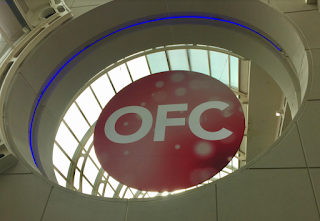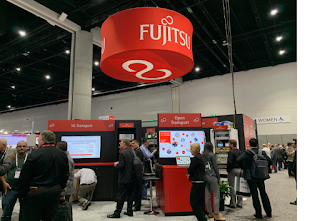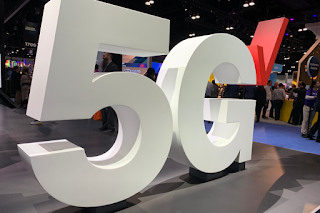To mark its fourth anniversary, the Telecom Infra Project (TIP) provided the following update on its activities:
1. Global expansion of TIP activities, progressing solutions such as OpenRAN, Disaggregated Cell Site Gateways (DCSG) and Cassini into a growing number of deployments and field trials. Specifically, Vodafone has now launched trials in Mozambique and the Democratic Republic of the Congo as anticipated, and is progressing with trials in the UK and Ireland. In Indonesia, Indosat Ooredoo and Smartfren will conduct the first OpenRAN field trials in the APAC region. Smartfren has also conducted and completed the first OpenRAN lab trial in the region.
2. Growing the number of technology solutions and project groups within TIP, addressing a wide range of deployment environments – including Core and Wi-Fi. For instance, Dell EMC continues to work on a configuration with SONiC, an open source network operating system, on DCSG including Zero Touch Provisioning. Alongside DCSG, the expanding OOPT product portfolio landed commitments from Edgecore and Wistron to develop the hardware for Phoenix (formerly known as Apollo), a 400G optical transponder. The Phoenix spec is now fully approved and available. Also in the OOPT family, IP Infusion is now announcing the general availability of their Cassini Operating System. Whitestack led a trial of the Cassini technology in Telefónica del Perú, and is implementing some of the first projects (combining optics and Layer2/3) in Latin American operators.
The OOPT Project Group launched an initiative focused on the development of Disaggregated Open Routers (DOR). The initiative will be led by KDDI and Vodafone. Several OOPT technology providers including ADVA, Delta, Drivenets, Edgecore, Exaware and Ufispace have committed to support the activity. I
3. Deeper alignment with adjacent industry consortia such as O-RAN Alliance, GSMA, OpenStack Foundation (OSF) and OpenAirInterface Software Alliance (OSA). First, O-RAN Alliance and TIP are announcing a liaison agreement for the development of open and intelligent RAN architecture and specifications. The liaison agreement enables TIP requirements to reference O-RAN specifications. The TIP OpenRAN 5G NR Project Group will be releasing their OpenRAN 5G NR Base Station Platform requirements document with normative references to the O-RAN specifications.
TIP and the GSMA have signed an understanding that will help drive share service provider requirements from the GSMA into TIP Project Group work streams – ultimately giving operators wider solutions in the areas of operator platforms and open networks.
TIP has reached agreements with the OpenStack Foundation (OSF), and the OpenAirInterface Software Alliance (OSA) to jointly explore collaboration areas on the newly formed Open Core Network Project Group and leverage each organization’s expertise and resources to accelerate progress towards a converged open core network implementation.
4. Integration and hardening of disaggregated technology solutions through TIP Community Labs and PlugFests. As part of the alignment with O-RAN, Deutsche Telekom is expanding its current TIP Community Lab and launching a European Open Test and Integration Center. Deutsche Telekom will transform its current Berlin lab to focus on interop validation of O-RAN compliant RU-DU solutions leading to an upcoming Open FrontHaul (RU-DU) TIP PlugFest, as well as supporting Open Optical Packet Transport (OOPT) technology trials. Multiple operators, most notably Orange, are collaborating across several streams in the lab for integration, testing and also for upcoming Plugfest activities. In addition, KDDI will be opening up the first TIP Community Lab in Japan, supporting DCSG solutions and the OOPT Project Group initially, and expanding to other technologies in the future. China Unicom has announced that it has joined the OpenRAN 5G NR Project Group, and is preparing to launch the first TIP Community Lab in China to support the project.
The full TIP update is posted here: https://telecominfraproject.com/tip-community-momentum-driven-by-new-operator-demand-technology-solutions-and-industry-alliances/
1. Global expansion of TIP activities, progressing solutions such as OpenRAN, Disaggregated Cell Site Gateways (DCSG) and Cassini into a growing number of deployments and field trials. Specifically, Vodafone has now launched trials in Mozambique and the Democratic Republic of the Congo as anticipated, and is progressing with trials in the UK and Ireland. In Indonesia, Indosat Ooredoo and Smartfren will conduct the first OpenRAN field trials in the APAC region. Smartfren has also conducted and completed the first OpenRAN lab trial in the region.
2. Growing the number of technology solutions and project groups within TIP, addressing a wide range of deployment environments – including Core and Wi-Fi. For instance, Dell EMC continues to work on a configuration with SONiC, an open source network operating system, on DCSG including Zero Touch Provisioning. Alongside DCSG, the expanding OOPT product portfolio landed commitments from Edgecore and Wistron to develop the hardware for Phoenix (formerly known as Apollo), a 400G optical transponder. The Phoenix spec is now fully approved and available. Also in the OOPT family, IP Infusion is now announcing the general availability of their Cassini Operating System. Whitestack led a trial of the Cassini technology in Telefónica del Perú, and is implementing some of the first projects (combining optics and Layer2/3) in Latin American operators.
The OOPT Project Group launched an initiative focused on the development of Disaggregated Open Routers (DOR). The initiative will be led by KDDI and Vodafone. Several OOPT technology providers including ADVA, Delta, Drivenets, Edgecore, Exaware and Ufispace have committed to support the activity. I
3. Deeper alignment with adjacent industry consortia such as O-RAN Alliance, GSMA, OpenStack Foundation (OSF) and OpenAirInterface Software Alliance (OSA). First, O-RAN Alliance and TIP are announcing a liaison agreement for the development of open and intelligent RAN architecture and specifications. The liaison agreement enables TIP requirements to reference O-RAN specifications. The TIP OpenRAN 5G NR Project Group will be releasing their OpenRAN 5G NR Base Station Platform requirements document with normative references to the O-RAN specifications.
TIP and the GSMA have signed an understanding that will help drive share service provider requirements from the GSMA into TIP Project Group work streams – ultimately giving operators wider solutions in the areas of operator platforms and open networks.
TIP has reached agreements with the OpenStack Foundation (OSF), and the OpenAirInterface Software Alliance (OSA) to jointly explore collaboration areas on the newly formed Open Core Network Project Group and leverage each organization’s expertise and resources to accelerate progress towards a converged open core network implementation.
4. Integration and hardening of disaggregated technology solutions through TIP Community Labs and PlugFests. As part of the alignment with O-RAN, Deutsche Telekom is expanding its current TIP Community Lab and launching a European Open Test and Integration Center. Deutsche Telekom will transform its current Berlin lab to focus on interop validation of O-RAN compliant RU-DU solutions leading to an upcoming Open FrontHaul (RU-DU) TIP PlugFest, as well as supporting Open Optical Packet Transport (OOPT) technology trials. Multiple operators, most notably Orange, are collaborating across several streams in the lab for integration, testing and also for upcoming Plugfest activities. In addition, KDDI will be opening up the first TIP Community Lab in Japan, supporting DCSG solutions and the OOPT Project Group initially, and expanding to other technologies in the future. China Unicom has announced that it has joined the OpenRAN 5G NR Project Group, and is preparing to launch the first TIP Community Lab in China to support the project.
The full TIP update is posted here: https://telecominfraproject.com/tip-community-momentum-driven-by-new-operator-demand-technology-solutions-and-industry-alliances/















































